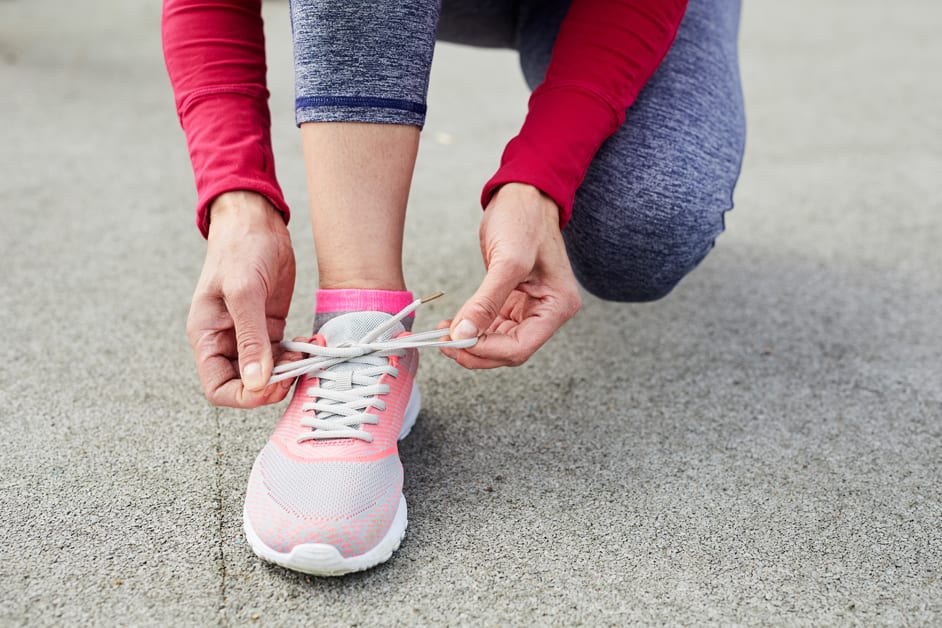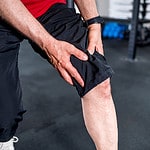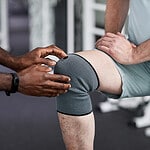Introduction
Weightlifting and knee pain can be managed effectively with the right shoes. Choosing the best ones isn’t a science, but there are a few things to consider. It’s vital to pick something that offers arch support and cushioning, as well as sturdy construction. Look into getting orthotic insoles too, for extra comfort and stability.
To reduce injury risk, make sure the shoes provide adequate levels of support without compromising performance. This will help you enjoy the benefits of regular weight training sessions.
Causes of Knee Pain
Knee pain? It’s a common problem for weight-lifters and anyone doing physically intense activities. Causes vary. It could be from too much knee use, an injury like an ACL tear, or an overuse injury.
Get more info on causes of knee pain and which shoes can help reduce it.
Overuse
Too much running, jumping, or sports can cause knee pain. Bending the knee too often over time can cause inflammation and strain the muscles and tendons. When these muscles and tendons get tired, they can’t absorb activity well, causing soreness or injury. Muscular imbalances can also affect the knee.
Common problems include:
- Runner’s knee
- Tendonitis
- Bursitis
- Jumper’s knee
- IT band syndrome
Poor Form
Poor form while doing strength exercises can cause knee pain. This is often due to bad technique, incorrect movement patterns, or weak muscles. Exercises that need strength and stability like squats, deadlifts and lunges require strong quads, tight hip flexors, and stable joint mobility. If any of these are not present, knee pain may occur.
To reduce knee pain due to poor form, practice good technique. Start with a 10-minute warm-up. This will help the blood flow and make the workout better. Warm-ups should include dynamic stretching and light cardio movements.
Good shoes are also important! Low profile shoes with flexible soles are better than bulky running shoes or flat training shoes. This helps with natural movement in the ankle and foot, which leads to improved stability in the hips and knees.
Keep your body ‘tight’ when exercising. Engage your core muscles to ensure rigidity during each repetition. Also use supportive gear such as braces, wraps, and straps if needed.
Weak Muscles
Knee pain can have various causes. These include poor muscle control, weak muscles and low joint stability, plus structural abnormalities. Weak quadriceps and hamstring muscles are common triggers of knee pain. Instability of the knee joint results in microtrauma or overstretching of the tendons and ligaments around the knee area, which causes pain and discomfort.
- Weak quadriceps muscles don’t provide support for the kneecap when walking or running. This ups pressure on the kneecap, making it move away from the natural position. This leads to more rubbing between the patella and femur, causing more pain when bending.
- Weak hamstring muscles create tension on the tendons and ligaments at the back of the knee when bending against gravity, making activities like climbing stairs or running downhill feel insecure.
Proper body mechanics, strength training exercises and stretching techniques can help reduce both chronic and acute knee pain. Consulting an experienced physical therapist is also recommended, as they can assist with the restoration of normal muscle strength, as well as preventing future injuries.
Types of Weightlifting Shoes
Weightlifting? Shoes make a big impact! They can help with performance and knee pain. There’s many shoes to choose from – each has its own unique features. What’s the perfect fit for you? Let’s explore the types of weightlifting shoes! How can they help?
Squat Shoes
Squat shoes are special shoes made for weightlifting. They help with knee pain. A flat sole and raised heel make squats easier. The heel pulls the shins closer to the body and takes pressure away from feet. Squat shoes look like regular trainers, but with a reinforced sole for balance.
When doing heavy squats, deadlifts, Olympic lifts or lunges, it is smart to get quality weightlifting shoes. They help with safety and knee injuries.
Olympic Lifting Shoes
Advanced weightlifters, who engage in exercises with heavy weight and explosive motion, wear Olympic lifting shoes. They come in both lace-up and slip-on models. They are designed for use on flat surfaces like a rubber gym floor.
These shoes are created to offer maximum power transfer during quick, explosive movements. A locking heel system offers stability and traction. The elevated heel, around 1 to 2 cm, assists in keeping the shins vertical when squatting with heavy weights. This helps reduce knee pain.
The soles are made of leather or synthetic material for superior grip and stability. The upper part is made of leather and features a reinforced toe box for protection during power cleans and the snatch.
Olympic lifting shoes maximize performance when doing explosive exercises with heavy objects. They also help postural performance and minimize lower body pain from incorrect form when using heavy weights.
Cross-Training Shoes
Cross-training shoes are amazing for dynamic workouts! They cushion and give arch support, yet are lightweight for more movement. The rubber outsole provides good grip and traction for turning or lateral movements. Also, heel cushioning absorbs shock from jumping or running to prevent injury. Plus, they have a low profile design which increases stability when lifting heavy weights and gives extra ankle support for Olympic lifts.
Best Shoes for Knee Pain
Weightlifting with knee pain? It’s a real challenge. But the right shoes can make all the difference. So, let’s focus on the best shoes for it. We’ll look at their features that make them suitable. Plus, we’ll talk about the pros and cons of each option. This way, you’ll know which type of shoe is best for you.
Squat Shoes
Squat shoes are made for support and stability during squats. They have a slightly raised heel for better body alignment. Reinforced soles make them durable and their flat base gives extra stability.
Athletes with knee pain can use squat shoes for extra cushioning and arch support. Adjustable heel lifts and straps can help when lifting heavier weights too.
Olympic Lifting Shoes
Olympic lifting shoes (OLS) are essential for weightlifting and protecting your knees. They provide durability and stability. Plus, a lacing system secures the foot in place. This helps you squat better and perform exercises like snatches and cleans.
OLS also have raised heels of varying heights. They give you more range of motion while handling heavy loads. But, beware! Most OLS have narrow toe-boxes. If your regular shoe size is too large or wide, they can be uncomfortable. Try different models on before buying an OLS for your knee health. Sizes can vary from one brand to another.
Cross-Training Shoes
Cross-training shoes give weightlifters with knee pain the most help. They are made for activities that need a quick switch of direction. They have an internal heel counter and wide, flat midsole for foot and ankle joint stability.
When selecting cross-training shoes, search for features like:
- Breathable mesh upper
- Abrasion-resistant synthetic overlay
- Foam midsole for cushioning and shock absorption
- Full-length rubber outsole for traction on many surfaces
- Supportive padded collar for extra comfort.
Not all cross trainers are the same, so make sure you try out some before buying!
Conclusion
To sum up, the best shoes for weightlifting with knee pain are those that offer support and stability. Shoes with a rigid sole and high-collar design can stop you from getting hurt and help you perform better. Look for shoes that are designed just for weightlifting or have features like extra cushioning and arch support.
Additionally, leather, mesh, or neoprene materials can give you comfort and more protection against wear and tear. Lastly, pick shoes that fit you well so you don’t get any pain or discomfort when you work out.
Frequently Asked Questions
Q1: What are the best shoes for weightlifting with knee pain?
A1: The best shoes for weightlifting with knee pain are those with a wide, flat sole and good arch support, such as cross trainers, stability shoes, or weightlifting shoes. They should also have cushioning to absorb the impact of the weight.
Q2: What features should I look for in shoes for weightlifting with knee pain?
A2: Look for shoes with good arch support, a wide, flat sole, cushioning to absorb impact, and good heel support. Also, make sure the shoes fit properly and are comfortable.
Q3: What are some tips for weightlifting with knee pain?
A3: Make sure to warm up before weightlifting and use proper form when lifting. If you feel any pain in your knees, stop immediately and rest. Talk to your doctor before starting any weightlifting routine if you have knee pain.





